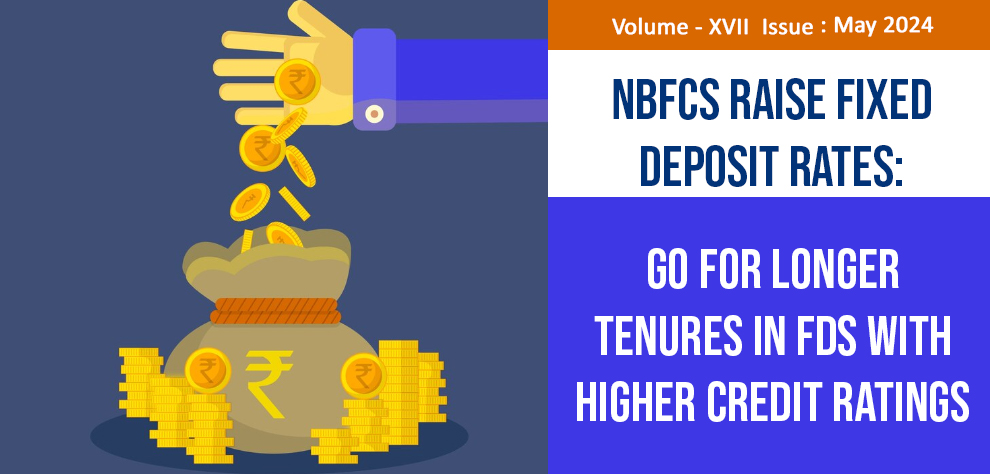Choose a tenure that balances liquidity needs and return on investment.
Non-banking financial companies (NBFCs) are increasing their fixed deposit (FD) rates to mop up funds that can make up for lower bank borrowings. Depositors seeking to invest in high-rated corporate bonds can opt for longer tenures. And those seeking to earn higher yield from low-rated issuers should opt for shorter tenures to contain the risk.
For instance, Shriram Finance, an AA+ rated company, has hiked fixed deposit rates by up to 20 basis points on various maturity tenures. It offers interest rates ranging between 7.85% to 8.80% per annum for terms spanning one to five years. The effective yield on a cumulative deposit is 10.50% for a 5-year deposit. Similarly, Bajaj Finance, an AAA-rated company, is offering up to 8.85% for a tenure of 42 months for digital deposits.
Look at credit rating
The financial health of a company would determine its capacity to repay the interest and principal components of its FDs. Thus, depositors should check the credit ratings first. Higher ratings indicate better financial stability and lower default risk. Moreover, investors should choose a tenure that balances their need for liquidity and return on investment.
Adhil Shetty, CEO, Bankbazaar.com, says short-term FDs offer flexibility but generally have lower interest rates compared to long-term FDs. “For long-term goals (over five years), longer-duration FDs may offer higher interest rates and better returns. Assess your liquidity requirements during the investment period,” he says.
Similarly, Gaurav Aggarwal, chief product officer, Credit Products, Paisabazaar, says companies having lower credit ratings usually offer higher interest rates on their FDs to compensate for the higher credit risk. “Depositors seeking to earn higher yield from low-rated issuers should opt for shorter tenures to contain their risk,” he says.
Just like bank FDs, corporate FDs too have penal rates for premature withdrawals. The interest income from corporate FDs are also taxed as per the tax slab of the investors.
Hike in risk-weight
The Reserve Bank of India (RBI) in November last year increased the risk weights on NBFCs by 25 percentage points to 125%, making their cost of borrowing from banks costlier. This reduced the supply of bank credit to NBFCs active in the unsecured loan segment, which in turn increased their cost of funds. As a result, NBFCs have to borrow from alternative sources like bond markets and corporate deposits.
Experts say NBFCs focusing on the unsecured segment are likely to increase their FD rates to attract incremental deposits. However, housing finance companies are unlikely to increase their FD rates as the RBI’s regulatory measures do not impact secured loans.
Higher rates offered by SFBs
Small finance banks (SFB) are also offering interest rates higher than that of many private and state-owned banks. As they have been classified as scheduled banks, FDs of up to Rs 5 lakh opened with each SFB by each depositor are covered under the deposit insurance programme of DICGC, an RBI subsidiary.
However, corporate FDs do not have any statutory cover. “This makes corporate FD a riskier investment instrument than FDs opened with SFBs. Thus, consider your risk appetite and the rates offered for your investment horizons while choosing between corporate FDs and FDs of SFBs,” says Aggarwal.
Both bank and corporate FDs are liable for tax deducted at source (TDS) at a rate of 10% when the interest income surpasses Rs 40,000 in a financial year (Rs 50,000 for senior citizens). However, banks offer the option to submit either Form 15G or 15H to exempt TDS if the depositor’s total income falls below the taxable threshold. On the contrary, corporate FDs lack this provision, leading to TDS deductions regardless of your income level.
